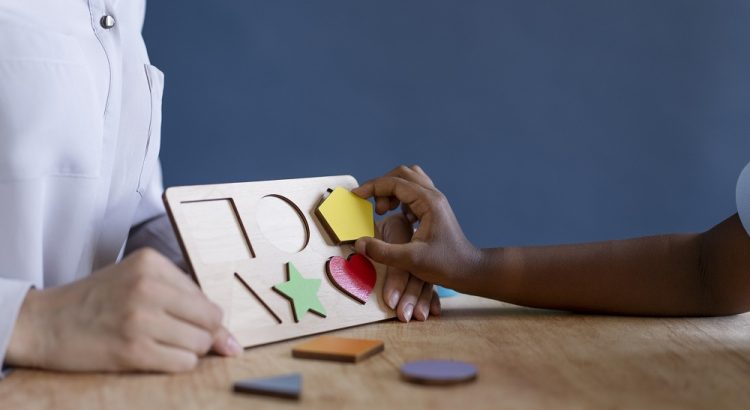ABC del Bienestar – As people live longer and healthier lives, the question of how to keep the mind young becomes increasingly important. Aging affects the body, but the brain has remarkable potential to stay sharp, resilient, and curious at any age. Cognitive stimulation for seniors goes beyond simple memory games it’s a full mental workout that combines brain exercises, social interaction, physical movement, and modern technology. The goal is not just to maintain mental sharpness but to enhance emotional well-being, creativity, and lifelong independence. This is where daily stimulation, digital tools, and real-life experiences meet to unlock the full potential of aging minds.
Table of Contents
Understanding Cognitive Stimulation and Its Importance
How the Brain Ages and Adapts
Mental Exercises That Strengthen the Mind
Technology-Based Tools for Brain Health
Physical Activity and Cognitive Synergy
Social Connection as Mental Exercise
Creative Hobbies That Boost Brain Power
Nutrition and Lifestyle for Cognitive Function
Real-Life Success Stories of Cognitive Growth
How to Create a Daily Cognitive Routine
Frequently Asked Questions About Cognitive Stimulation
The Endless Journey of a Strong and Active Mind
Understanding Cognitive Stimulation and Its Importance

Cognitive stimulation for seniors is the process of keeping the brain active through structured and enjoyable activities. It focuses on enhancing memory, reasoning, language, and problem-solving skills. More importantly, it helps maintain confidence and emotional balance as one grows older. Unlike passive entertainment, cognitive exercises demand focus and participation, giving the brain a genuine workout.
List of stimulating activities:
-
Reading books that challenge your perspective
-
Solving logic puzzles or memory games
-
Engaging in deep discussions about new topics
This kind of engagement encourages brain flexibility, helping neurons form new connections and preserving mental sharpness well into the later years.
How the Brain Ages and Adapts
The human brain doesn’t stop evolving with age—it adapts. Neuroplasticity, the brain’s ability to reorganize itself, allows seniors to learn new skills and strengthen mental connections. Cognitive stimulation for seniors is built on this foundation. Studies show that those who stay mentally active experience slower cognitive decline, higher happiness levels, and even lower risks of Alzheimer’s disease.
Examples of adaptive practices:
-
Learning a musical instrument after retirement
-
Picking up a new language
-
Trying digital learning courses for seniors
By embracing new challenges, seniors can boost creativity and memory retention simultaneously.
Mental Exercises That Strengthen the Mind
The brain thrives on variety. Daily mental exercises train different parts of cognition—memory, logic, and creativity. These practices improve focus and help maintain healthy neural pathways.
Recommended brain-strengthening activities:
-
Crossword puzzles to sharpen vocabulary
-
Sudoku for logic and pattern recognition
-
Memory card games to enhance recall
-
Storytelling and journaling for expressive thinking
Practicing these tasks regularly stimulates both the left and right hemispheres of the brain, building mental endurance much like muscles respond to physical training.
Technology-Based Tools for Brain Health
Modern technology has revolutionized how seniors can engage in mental fitness. Mobile apps, virtual reality programs, and smart devices provide easy access to brain training activities. Cognitive stimulation for seniors can now happen anywhere—from the comfort of a living room to a tablet on the go.
Popular technology-driven tools include:
-
Lumosity for memory and reasoning training
-
Elevate for focus and language improvement
-
BrainHQ for personalized mental workouts
-
Virtual reality puzzles for immersive engagement
Technology makes mental training interactive and trackable, helping seniors measure progress and stay motivated.
Physical Activity and Cognitive Synergy
Physical exercise fuels the mind as much as the body. When seniors engage in light movement, blood circulation improves, delivering more oxygen to the brain. This strengthens focus, memory, and mood regulation.
Ideal physical activities for mental benefit:
-
Morning yoga for mindfulness and flexibility
-
Dancing for coordination and rhythm
-
Tai chi for balance and calmness
-
Brisk walking for oxygen and clarity
Cognitive stimulation for seniors becomes more effective when paired with physical movement—creating a complete system for brain-body wellness.
Social Connection as Mental Exercise
Human interaction is one of the most powerful brain stimulants. Conversations, laughter, and empathy activate neural networks tied to language and emotional intelligence. Seniors who regularly socialize are less likely to experience depression or memory decline.
Ways to integrate social interaction:
-
Joining book clubs or hobby groups
-
Volunteering at local community centers
-
Participating in intergenerational events
-
Hosting weekly family gatherings
These activities stimulate the brain’s emotional center, improve communication skills, and reinforce self-worth—key components of cognitive longevity.
Creative Hobbies That Boost Brain Power
Creativity keeps the brain alive. It fosters imagination and emotional expression while challenging cognitive flexibility. Art, writing, and music are powerful examples of activities that engage both logic and emotion.
Creative practices to explore:
-
Painting landscapes or still life
-
Writing short stories or memoirs
-
Playing a musical instrument
-
Crafting or designing home projects
Cognitive stimulation for seniors through creativity not only enhances mood but also builds new neural pathways, encouraging innovation and self-expression at any age.
Nutrition and Lifestyle for Cognitive Function
Food directly influences brain performance. A diet high in antioxidants, omega-3 fatty acids, and vitamins protects neurons from oxidative stress and inflammation. Hydration and sleep are equally vital for maintaining mental energy and focus.
Brain-boosting foods to include:
-
Salmon and sardines for omega-3s
-
Blueberries and leafy greens for antioxidants
-
Nuts, seeds, and olive oil for healthy fats
-
Green tea and turmeric for clarity and calmness
Combining good nutrition with cognitive stimulation for seniors ensures the brain has the fuel it needs to stay alert and active.
Real-Life Success Stories of Cognitive Growth
Across the world, many seniors are proving that mental fitness is ageless. Take Mary, 72, who began learning piano after retirement. Within months, her memory improved, and her mood became more positive. Or consider Jorge, 68, who started daily Sudoku and chess sessions to improve concentration—and noticed better recall in everyday life.
These stories show that consistent cognitive stimulation for seniors can lead to:
-
Improved confidence in decision-making
-
Renewed sense of curiosity
-
Stronger social connections through shared activities
-
Healthier emotional balance and fulfillment
Real-life benefits demonstrate that staying mentally active is a lifestyle, not just a hobby.
How to Create a Daily Cognitive Routine
The key to success lies in consistency. Seniors who plan daily routines for mental stimulation see the best results. Combining physical, mental, and social activities creates a balanced approach to overall well-being.
Sample daily routine for cognitive vitality:
-
Morning: 10 minutes of meditation and a crossword puzzle
-
Afternoon: A 20-minute walk and phone chat with a friend
-
Evening: Listening to music, journaling, or online brain training
Cognitive stimulation for seniors works best when it becomes part of everyday life, seamlessly blending learning, activity, and enjoyment.
The Endless Journey of a Strong and Active Mind
Aging with a sharp, focused mind is not about resisting time—it’s about embracing it with curiosity and consistency. Through daily practice, seniors can unlock their cognitive power, combining tradition with technology, and discipline with joy. Cognitive stimulation for seniors is the bridge between aging gracefully and living vibrantly, reminding us that mental growth never truly stops. It’s a journey that celebrates learning, connection, and the limitless potential of the human brain.
Frequently Asked Questions About Cognitive Stimulation
What are the best cognitive exercises for seniors?
Puzzles, reading, learning new skills, and using memory apps are excellent ways to keep the brain active and engaged.
How often should seniors practice cognitive activities?
Ideally, daily engagement even short sessions of 15–30 minutes—can create lasting cognitive benefits.
Does technology really improve brain health?
Yes, when used purposefully. Apps and digital tools provide structured activities that track progress and encourage regular practice.
Can cognitive decline be reversed through stimulation?
While complete reversal may not be possible, consistent mental exercise can slow decline and improve quality of life significantly.
What’s the best combination of brain and body activities?
Mixing physical exercise, social interaction, and mental challenges creates a holistic approach to lifelong brain health.



